Borage is an edible herb that is very easy to grow from seed. Both the flowers and leaves can be used for culinary purposes, and are also very attractive to the pollinators in the garden. Learn how to grow borage, and fill your garden with this delicious herb.
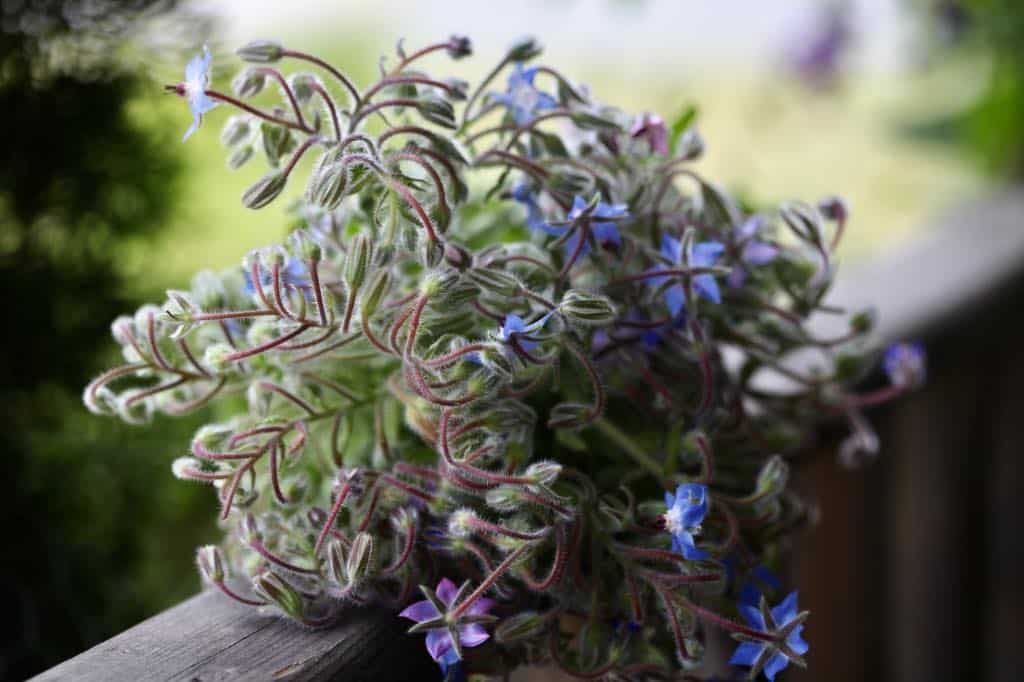
This year I decided to grow more edible flowers at the flower farm. Borage was at the top of the list, not only because I love the look of the flowers, but also because it is just such an amazing plant.
It is definitely a worthwhile flowering herb to grow in your herb garden.
All parts of the borage plant can be used. The flowers and leaves, and even the stems can be used in dishes for an added nutritional benefit.
The delicate blue star shaped flowers of borage can make a lovely garnish. Use them in salads, as well as for cake decorating and use on baked goods.
Once you start growing borage, it will likely return to the garden year after year. This will not be in the form of the same plant, but rather, from new seedlings from self sown seeds.
The good news is that roots of the borage plant are very shallow, and are easy to remove if you find borage volunteers popping up in unwanted spaces. Thin seedlings as needed.
You may however be very happy to see them, and choose to let them remain where they are growing naturally as volunteer plants.
Borage is also good for the bees and other pollinators, and is a good companion plant to have in the garden.

What Is Borage?
Borage is an annual herb from the Boraginaceae family, and the Genus Borago. The species name of the plant is borago officinalis.
The plant is also known by the common name starflower, due to the starlike formation of the delicate blooms.
Borage plants are native to the Mediterranean, however have naturalized and become well adapted to many locations. This flowering plant is an annual, but readily reseeds, even in colder climates.
The plant grows to be approximately 3 feet in height, and grows larger in warmer climates, most likely due to longer growing times.
Here in zone 5b our growing period is limited to about three to four months, so the borage does not reach it's maximum height.
Borage is also a fabulous companion plant. Plant with tomatoes, brassicas and spinach for companion planting purposes.
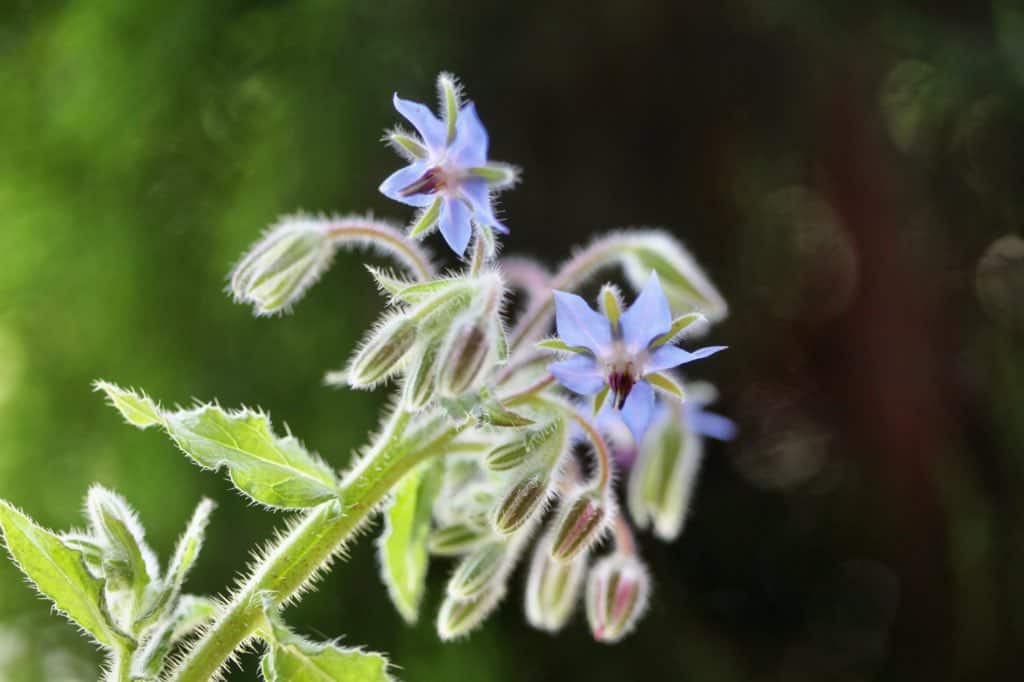
Borage Flowers
The sweet star shaped flowers of the borage plant have five triangular shaped petals, and a fine hair covered calyx.
The mature flower color is a bright azure blue. The petals start out pink, and gradually change to the blue color as they mature.
The herb is also available with white flower petals, although this color is less common.
Borage flowers hang downwards on the plant, and are visible from underneath the plant.
These tiny blue flowers can be eaten, and have a fresh cucumber flavor.
Borage blooms for a long period of time throughout the growing season, and flowers in sequence.
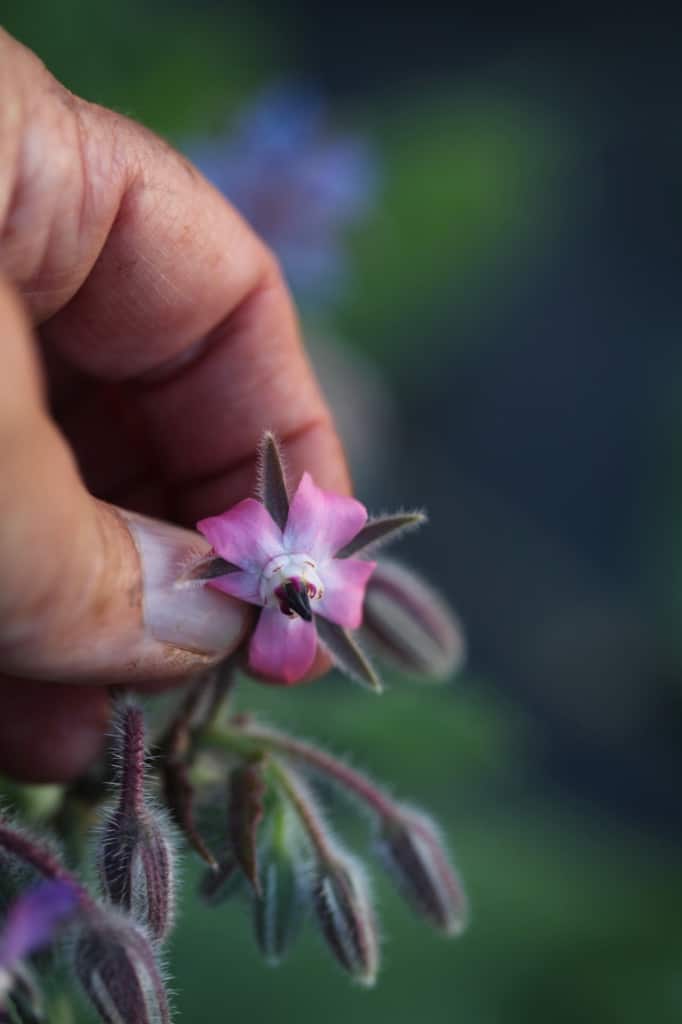
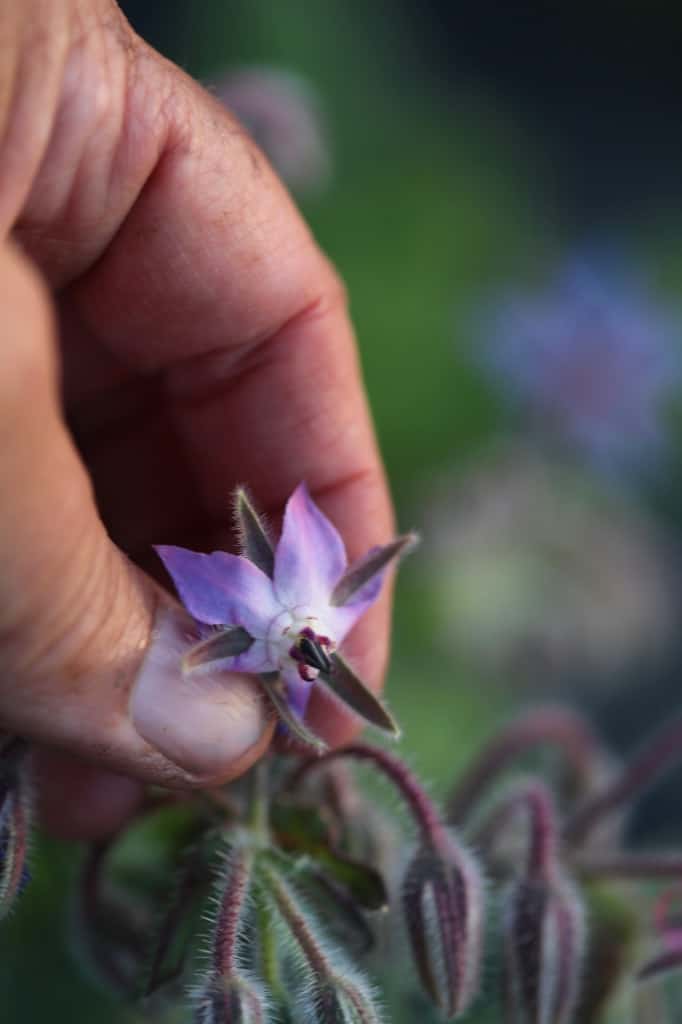
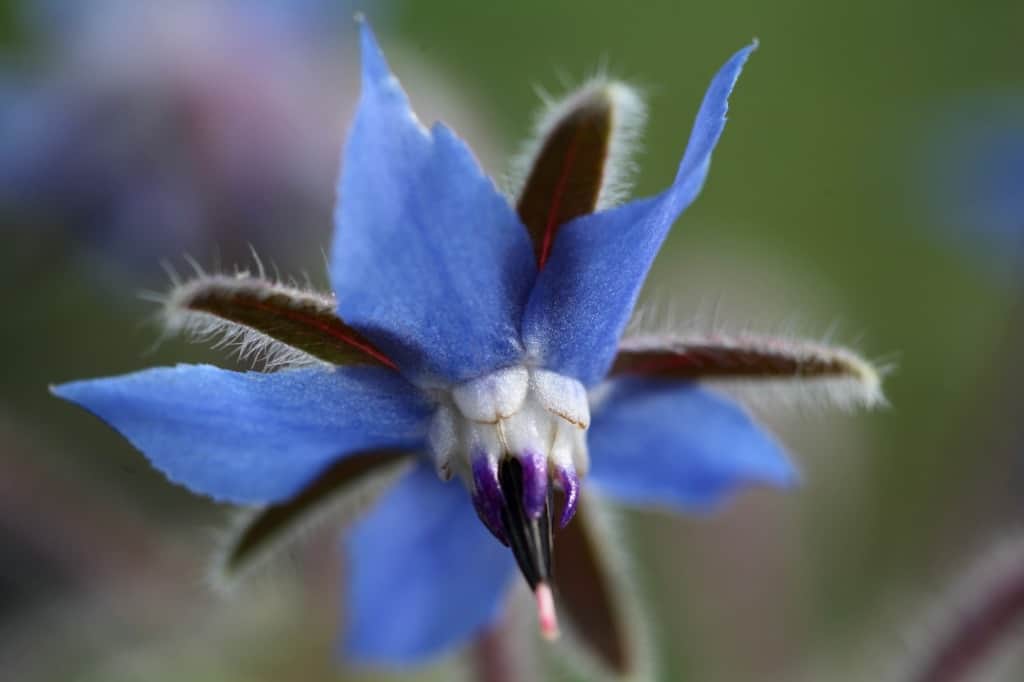
Borage Foliage
The leaves and stems of the borage plant are covered with small bristle-like hairs which give them a slight sheen and glow in the evening light.
The hairs on the leaves help the plant to conserve water.
Younger leaves tend to be somewhat less prickly than more mature leaves, which can be helpful when using in salads.
The leaves are ovate in shape and range in length from 2 to 6 inches in length, with larger leaves towards the bottom of the plants.
Borage leaves can be used to make a tea, both in the fresh as well as dried forms.
The leaves can also be eaten raw, and placed in salads with a mild cucumber flavor.
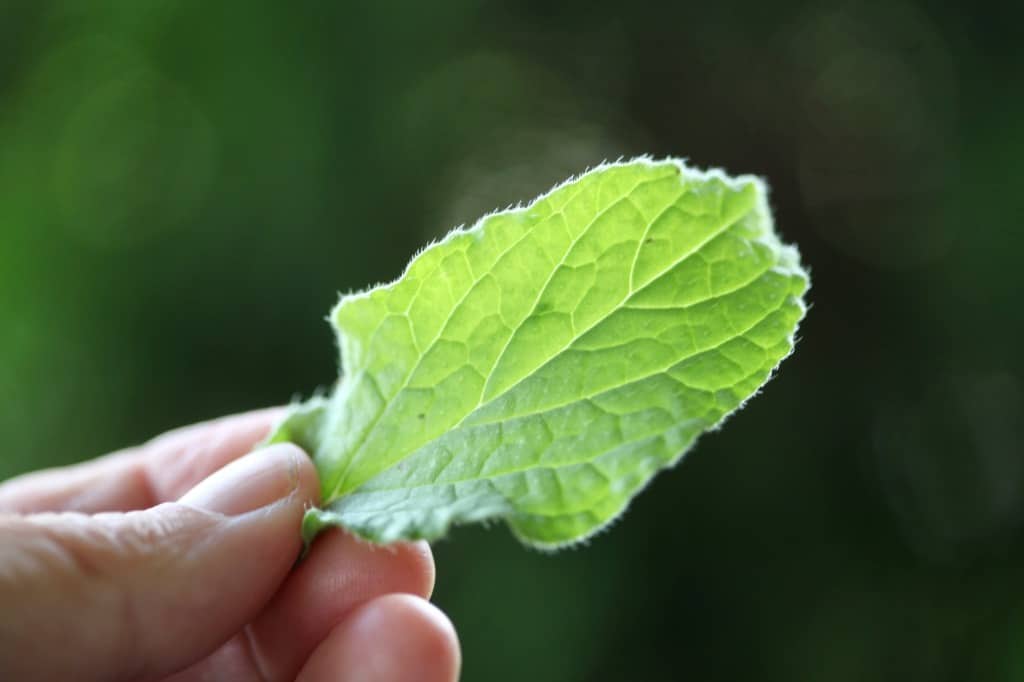
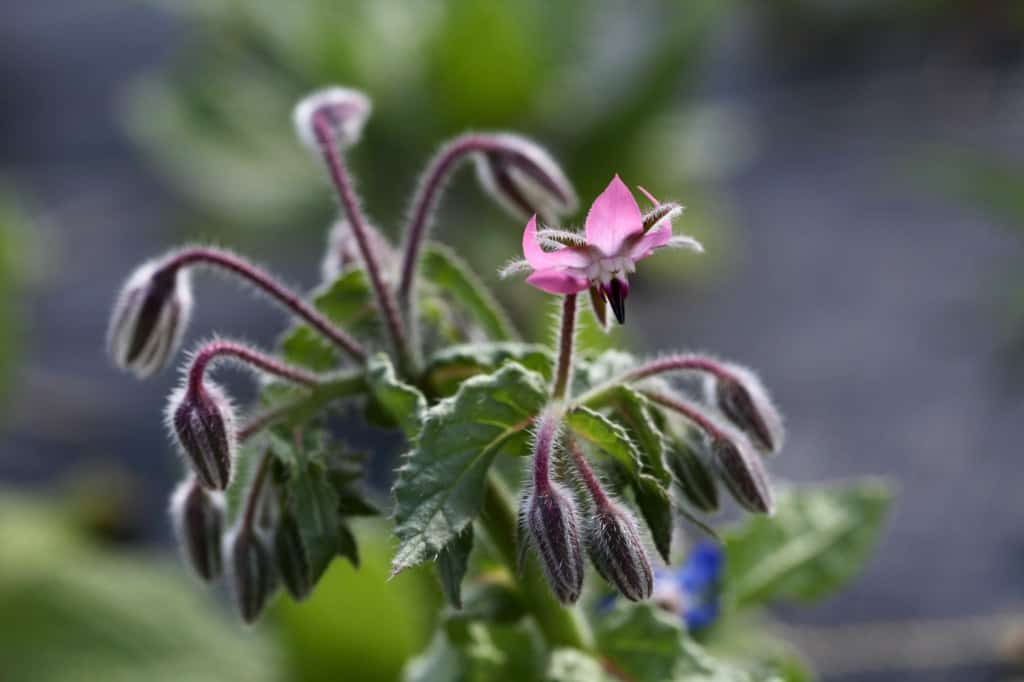
Borage Seeds
The seeds of borage have a very unique cylindrical shape.
They are approximately 0.5 cm in length, and grey in color.
Seeds can be used to make borage seed oil, which is used in herbal medicine.(source)
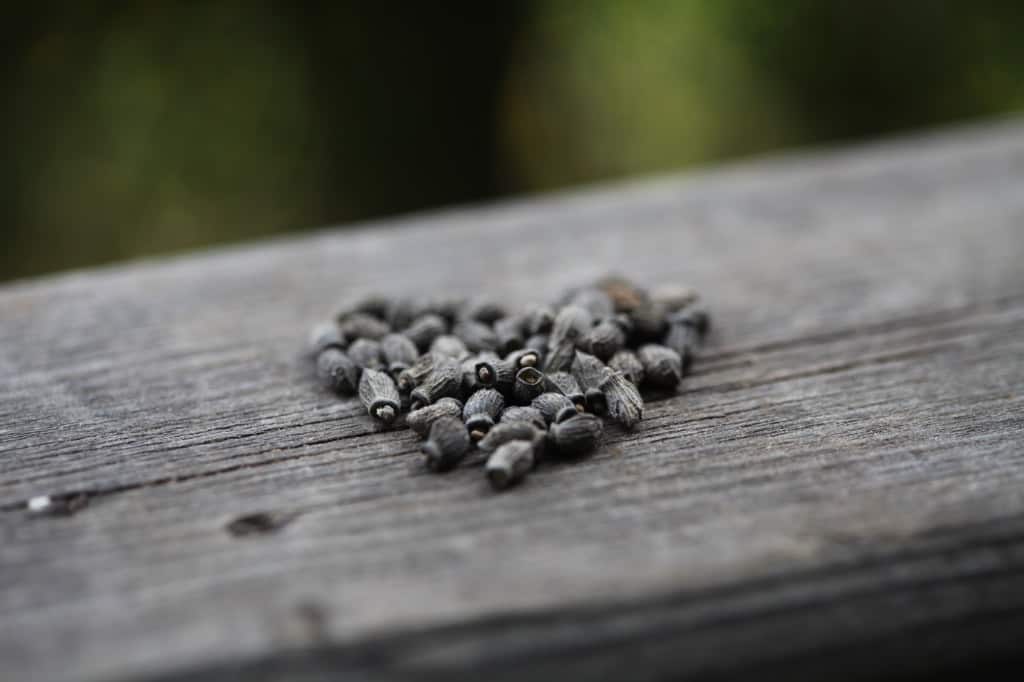

Growing Borage From Seed
Is Borage Easy To Grow From Seed?
Borage is very easy to grow from seed.
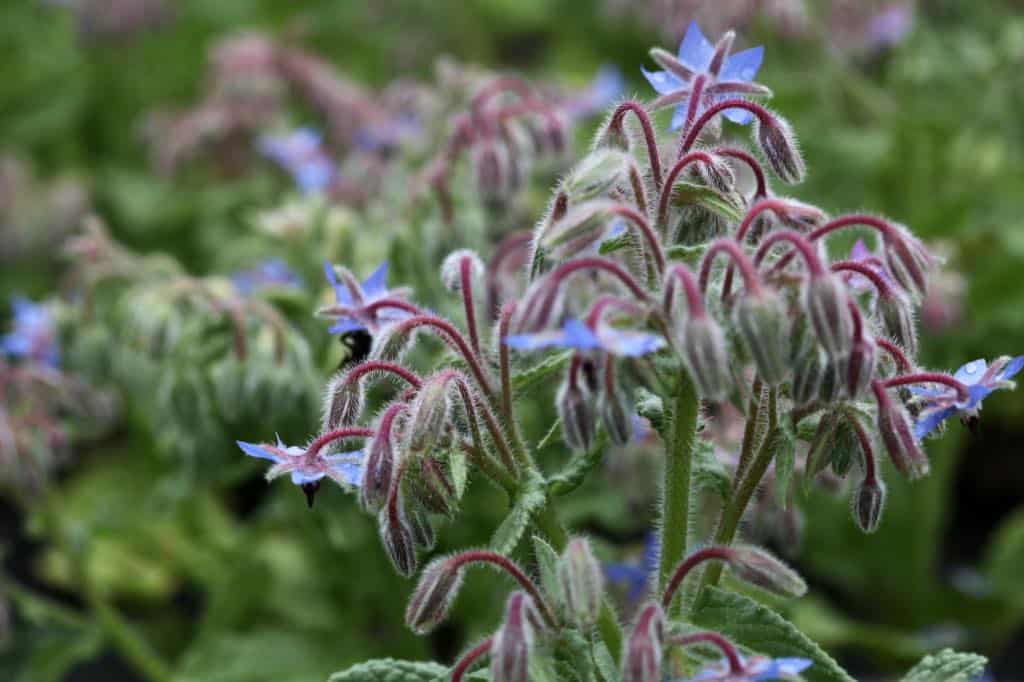
The seeds generally have a high germination rate, and the plants can grow quickly from seed to bloom.
Planting from seed and watching the tiny seedlings grow can be very rewarding, and is all part of the process of getting to know your plants.
The plants do better if direct seeded to avoid transplant shock.
You can however start the seeds indoors as well, making sure that the transplantation process is a gentle one, and giving the newly planted borage seedlings some extra care and water.
We started all of our borage indoors in cell trays and they did well with the transplanting. Although they did experience some stress, they bounced back and responded well to the watering.
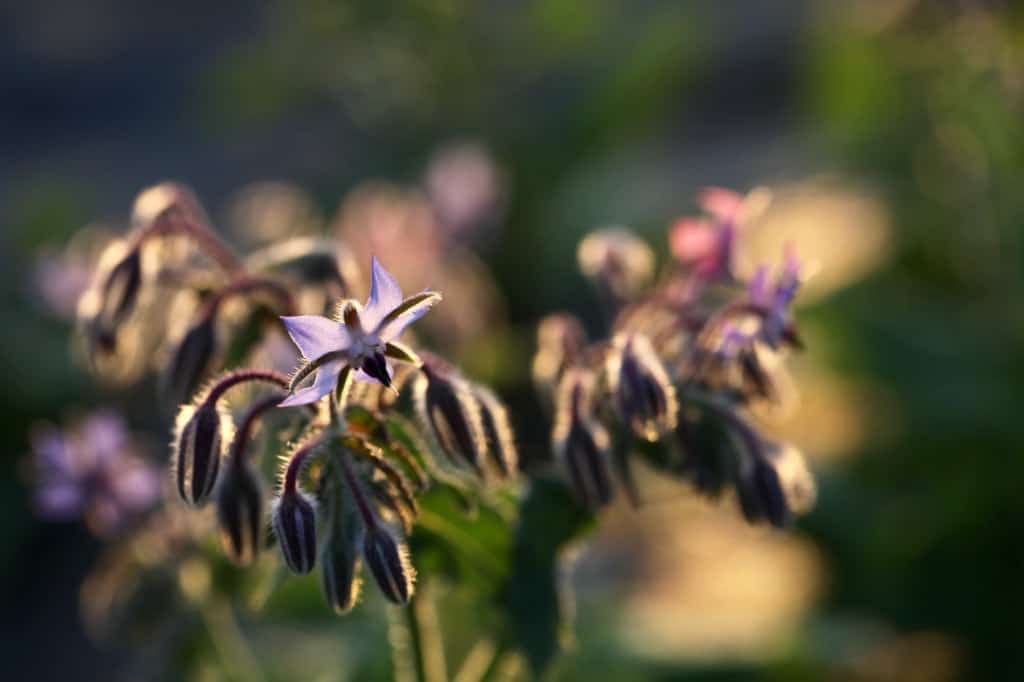
Do Borage Seeds Need Stratification?
Borage seeds do not require stratification, such as cold moist storage for example, to improve germination.
Rather, the seeds can be planted directly from the seed packet, or from your storage container, if you have harvested the seeds yourself.
Sowing Borage Seeds
Borage seeds can be sown either directly into the garden, or planted indoors in cell trays or containers to give them a head start on the growing season.
Borage does best with direct sowing, as it does not like root disturbance.
It can be sown from seed indoors however, to get a head start on the season in colder zones. Just take care when transplanting, and keep the plants well watered until they establish in the garden.
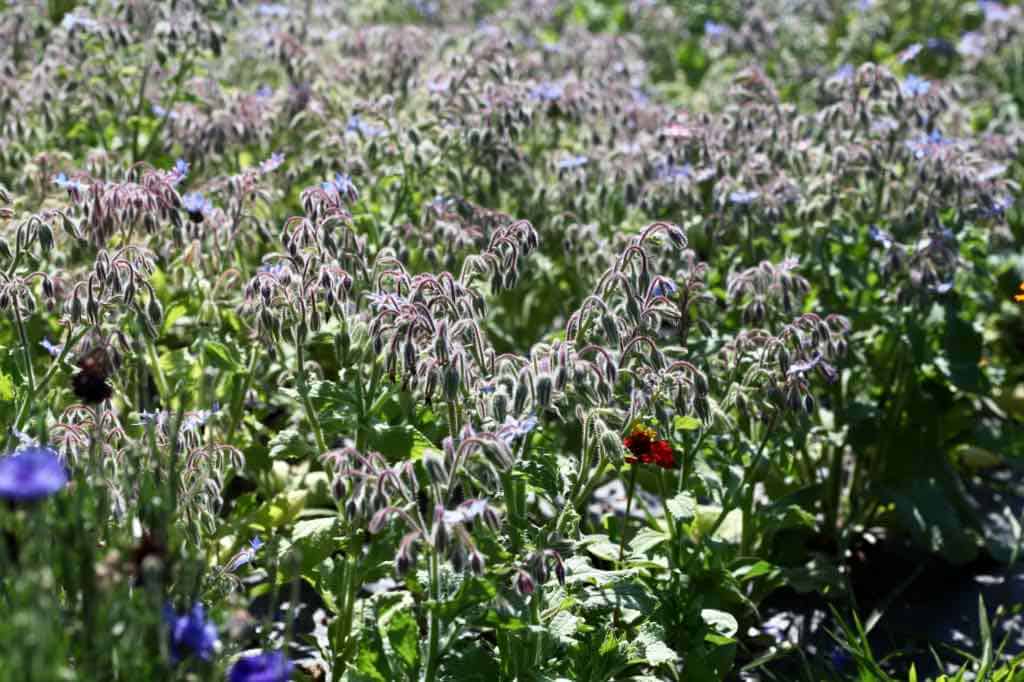
Direct Sow Borage
- If sowing directly into the garden, make sure that this is done after your last spring frost date, and after the danger of frost has passed.
- Direct sow into a prepared bed with spacing approximately 18" to 24" apart.
- Plant the seeds at a ½" depth and cover with soil.
- Water in gently, and keep moist until the seeds have germinated and start to grow.
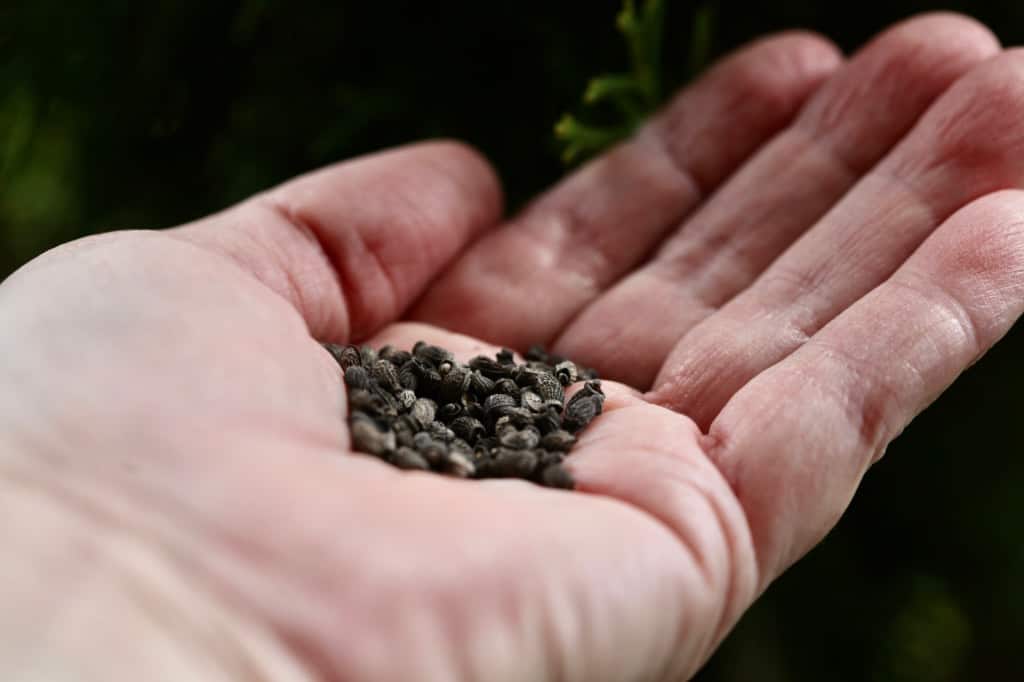
Sowing Borage Seeds Indoors:
- If sowing indoors, plant the seeds into the containers two to three weeks before the last frost date, and grow them on under lights, until ready to be planted out.
- Sow the seeds into a soilless mix.
- Label the cell tray with the seed type and the date.
- Fill the cell tray or container with the mix.
- Make a small hole in the centre of each cell approximately ½" deep, which is about three times the width of the seeds, and place the seed into the hole.
- Cover the seed lightly with more soilless mix or even some vermiculite.
- Bottom water the tray to make the soil moist.
- Provide bottom heat with a heat mat until there is approximately 60% germination of the seeds.
- Make sure that the soil remains moist while the seeds are germinating, and do not allow the soil to dry out.
- Once 60% of the seeds have germinated, remove from the heat mat and grow under grow lights until ready to be planted out into the garden.
- These seedlings germinate quickly, and also grow to a good size fairly quickly. They will not require much time under the lights before they are transferred into the garden.
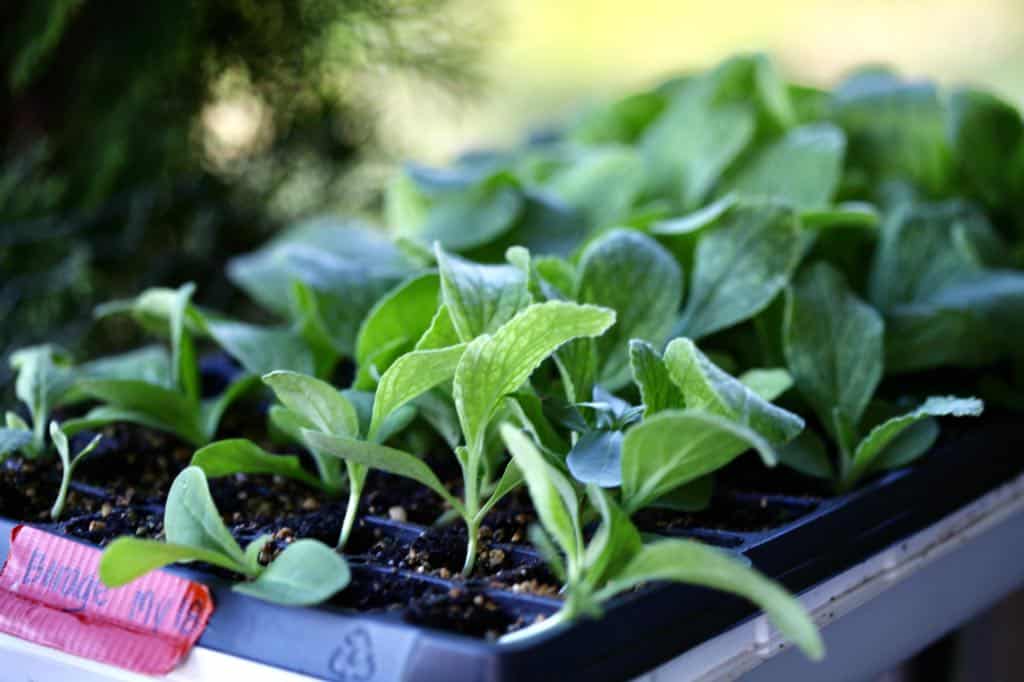
How Long Does Borage Take To Grow From Seed?
Germination of the seeds will occur within one to two weeks.
The plants grow fairly quickly after they have sprouted and begin to grow.
We had borage blossoms within six weeks of planting the seeds.
Borage takes 55 days to grow to maturity from seed, and afterwards will continue to bloom until frost.
Planting Borage Seedlings
- Borage is easy to plant and does well in the garden.
- Make sure that the tiny seedings grown inside are hardened off before planting out into the garden.
- The hardening off process will acclimatize the plants to the outdoor environment, and helps them to tolerate the sun, wind, and temperature fluctuations of their outdoor location.
- Seeds that have been direct sown are naturally hardened off.
- Be careful of root disruption when removing the seedlings from their containers.
- Plant the seedlings 18" to 24" apart, as they will grow into large plants, and this spacing will accommodate for their growth.
- Water in the seedlings after planting, and water regularly while getting established in the garden.
- Once established, the new plants will grow quickly, and start to branch out.
- Flowers will form within the first month, and continue to bloom throughout the growing period.
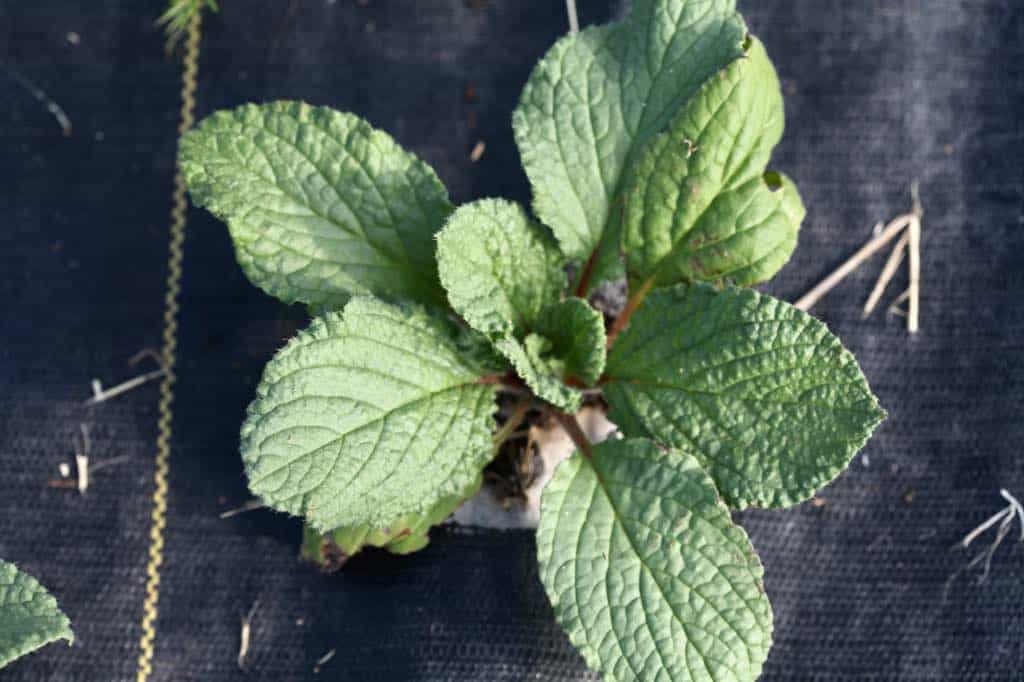
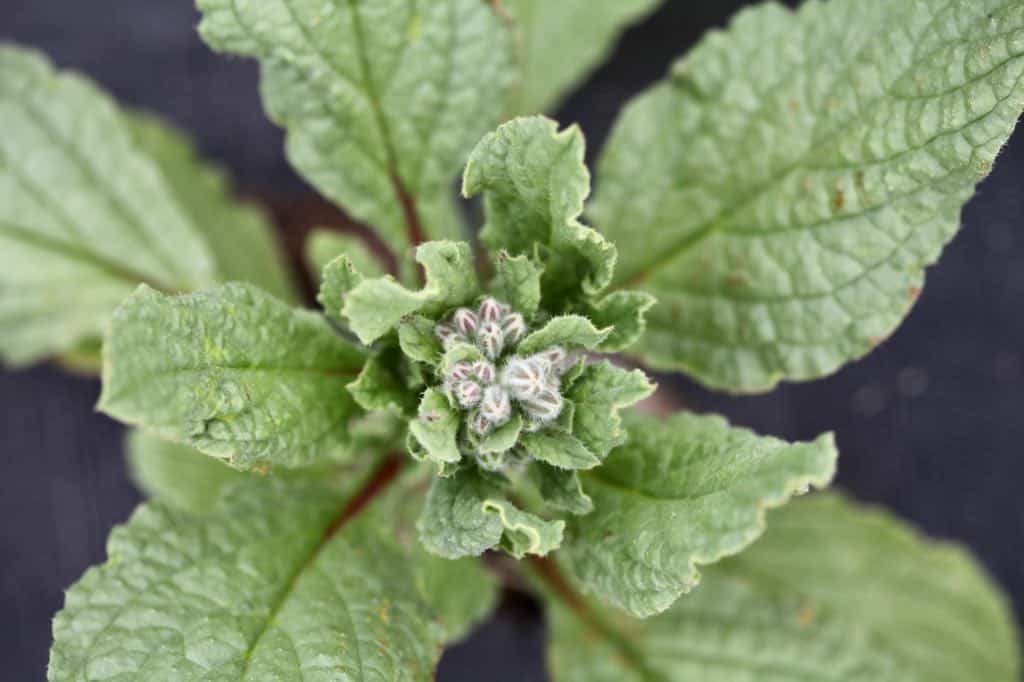
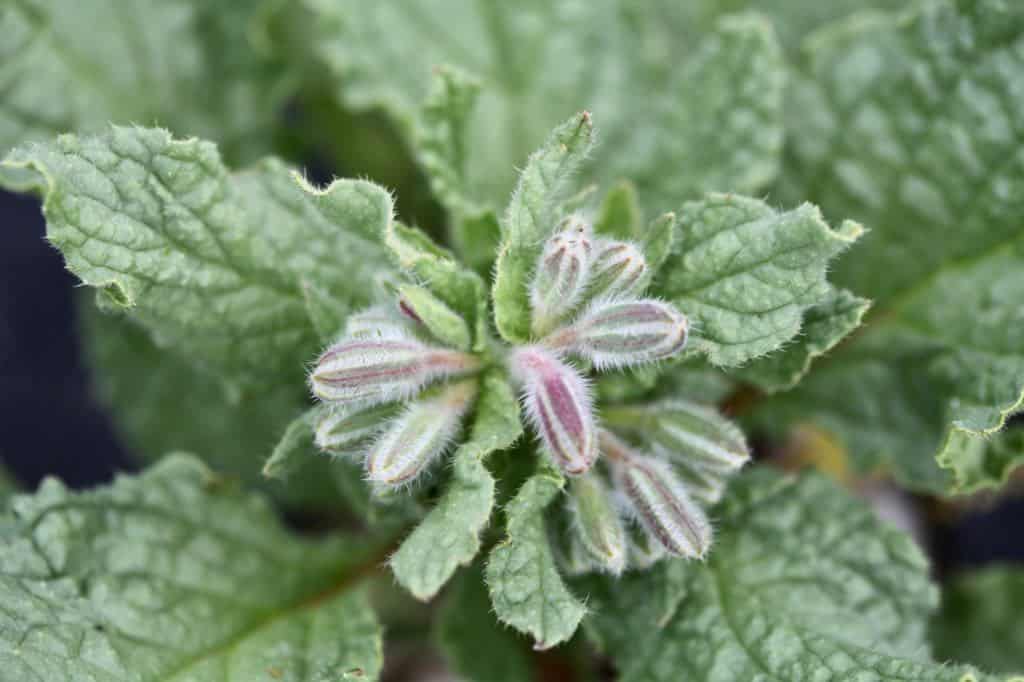
Growing Borage In The Garden- Borage Care
Hardiness Zones
- Borage is a hardy annual plant, although is not frost resistant.
- Therefore plant out after the risk of frost has passed, and once the fall frosts occur the plant will be finished for the season.
- Grow borage from seed annually, for the full length of the growing season, and plant yearly for continued growth in the garden.
- Borage will grow in all hardiness zones.
Soil Requirements
- Borage prefers an average well drained soil. It will also tolerate poor soil, however will grow best in a location with more organic matter.
- It grew well in our clay soil at the flower farm.
- Overtime the borage will help to condition the soil, and it's a great plant for the permaculture garden. It will give back more than it takes from the garden, and is a great additive to the soil once it composts.
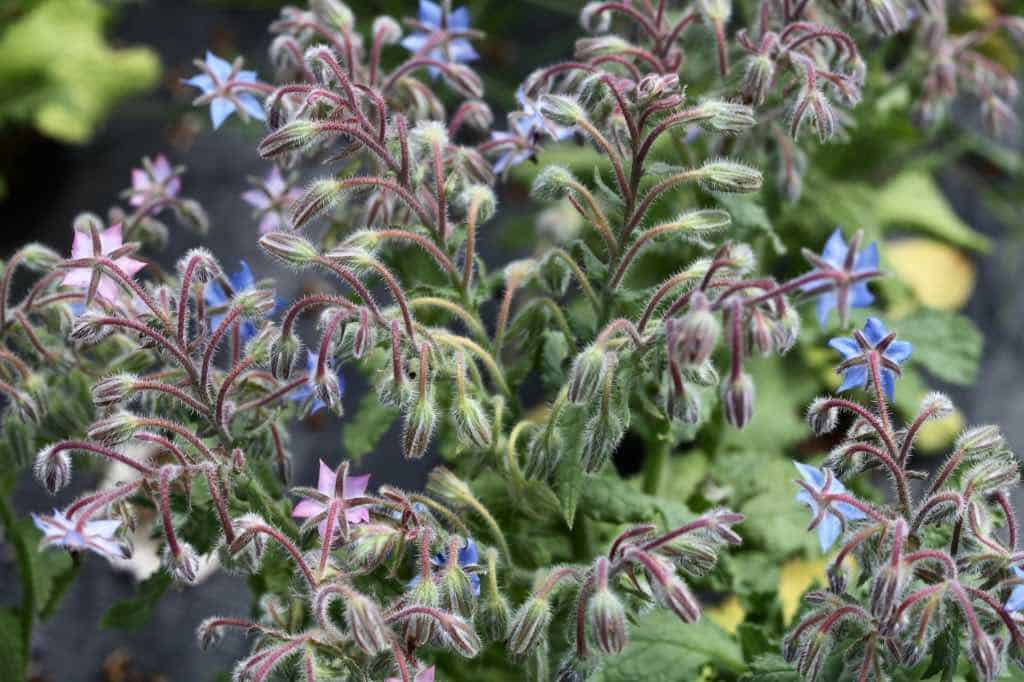
Light Requirements
- Borage is best grown in full sun for best flowering, however it will also grow in partial shade.
- Grow in a sunny spot for more flowers.
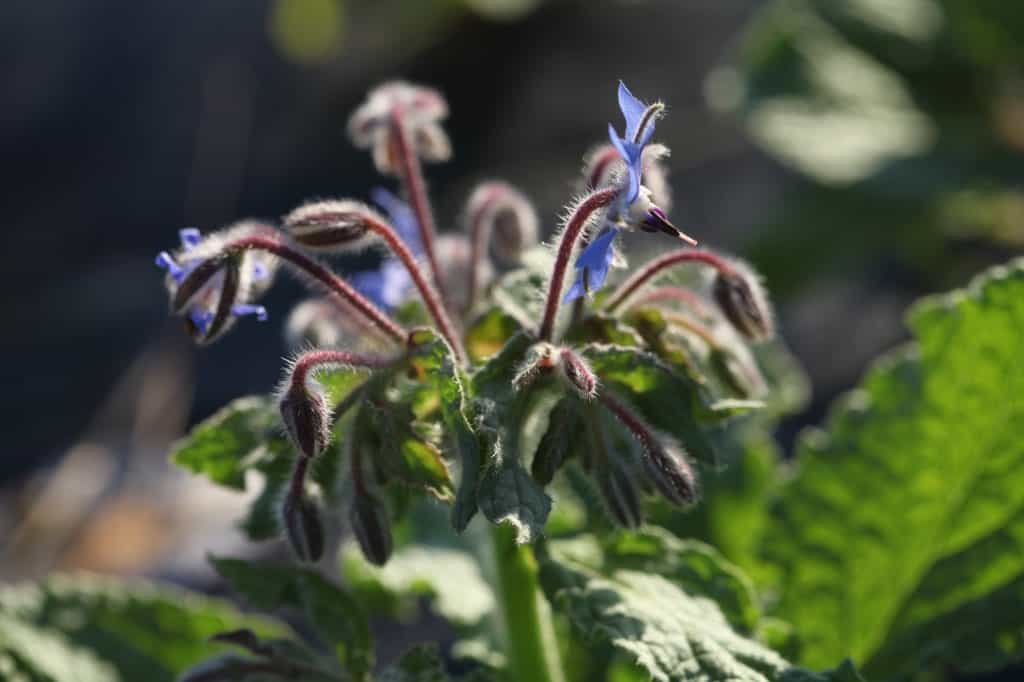
Water Requirements
- Borage is drought resistant once established, however does like a moist soil when first establishing in the garden.
Deadheading
- There is no need to prune borage to tidy the plant, as the spent blooms quickly fall from the plant when they are done blooming.
- Pruning will however enhance the growth, and help to contain the plants if they grow very large.
- It will also help to prevent self seeding by removing the seed heads or prevent them from forming.
- The seeds will first form at the bottom of a spray of flowers, as this is where the first blooms had occurred. The seeds will then gradually form all the way up to the top of the cluster, as the flowers are finished blooming.
- You can have seeds forming on a stem at the bottom of the flower cluster, while at the same time having fresh blossoms blooming at the top.
- If you chose to prune, deadhead the spent blooms, while allowing fresh blossoms to remain. Alternatively, just cut back the flower stalk, as more will be on the way, developing on the branches of the plant.
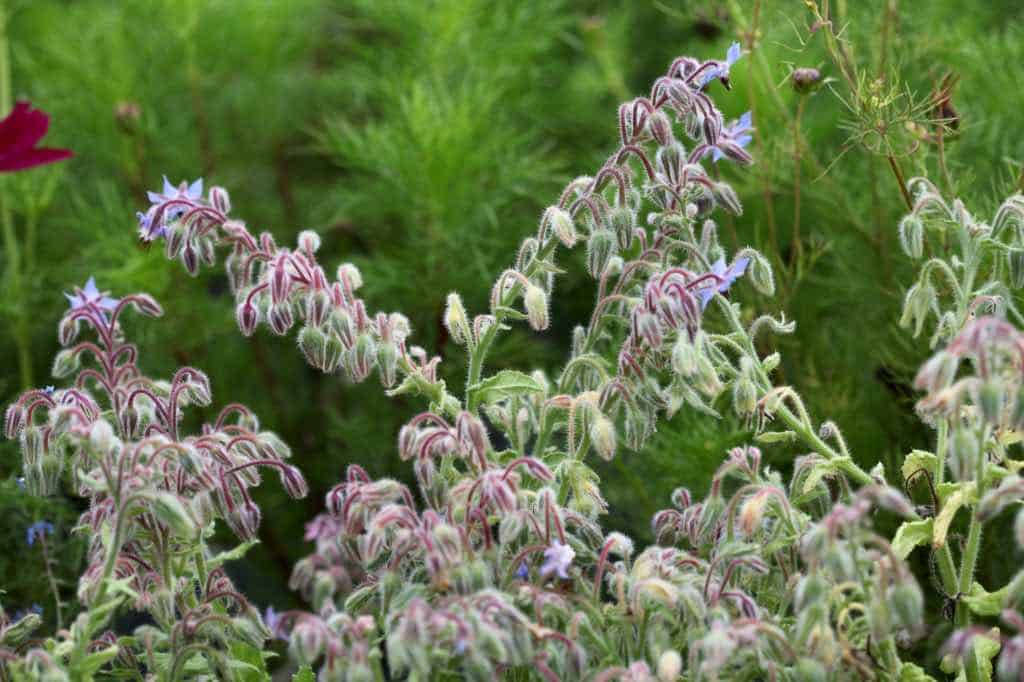
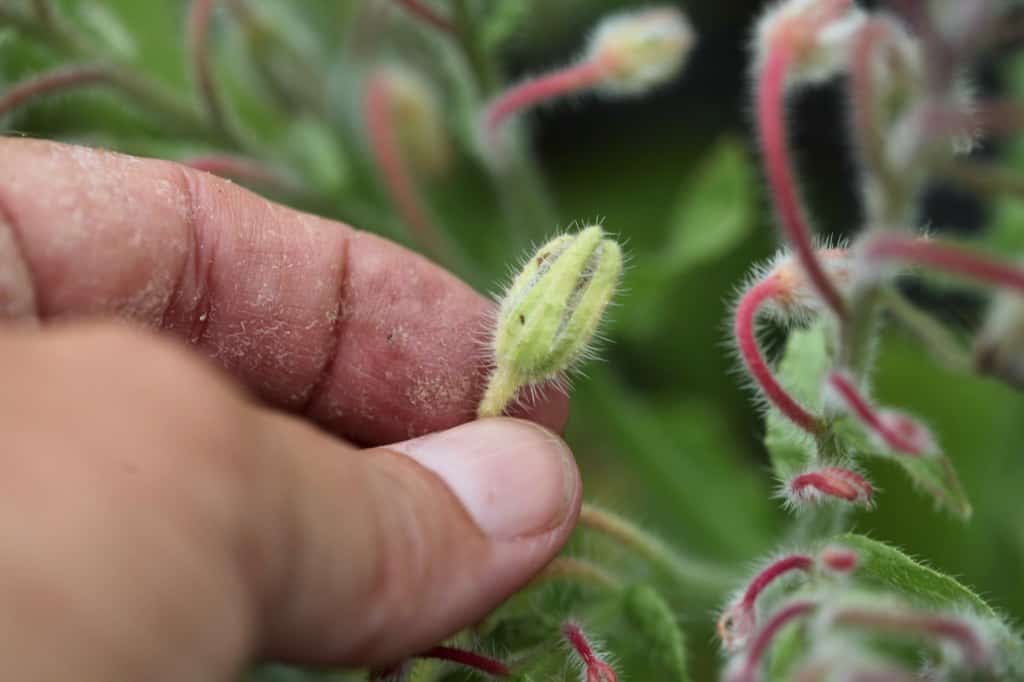
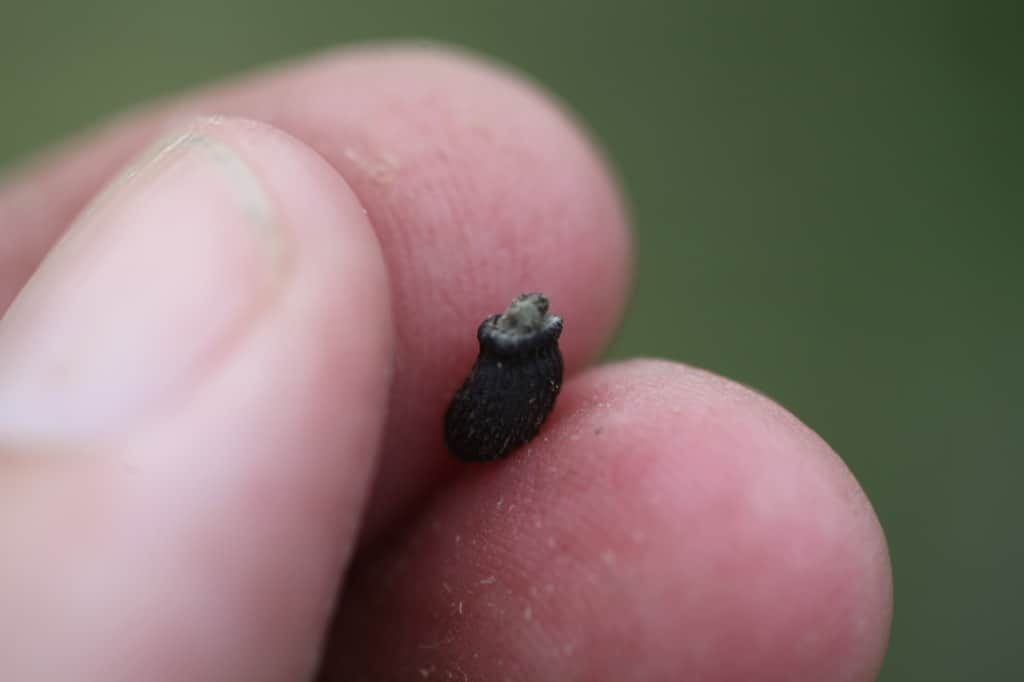
What Is Borage Used For?
Culinary Uses
Borage can be used as a garnish, since the flowers are edible and bright and delicate in color and form. They look great in salads with a little punch of blue color.
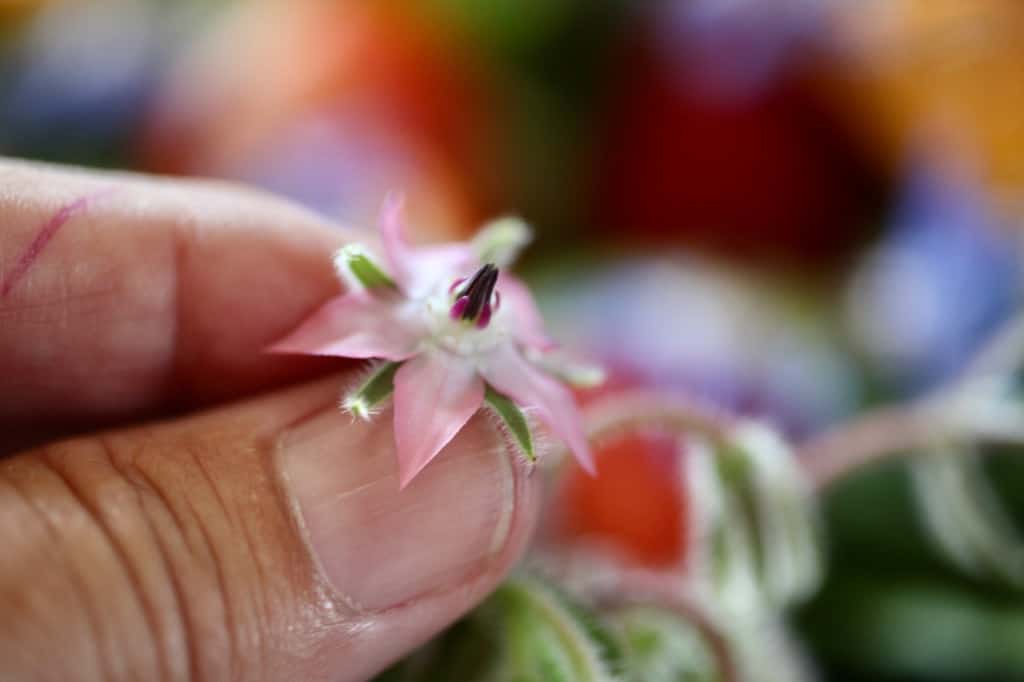
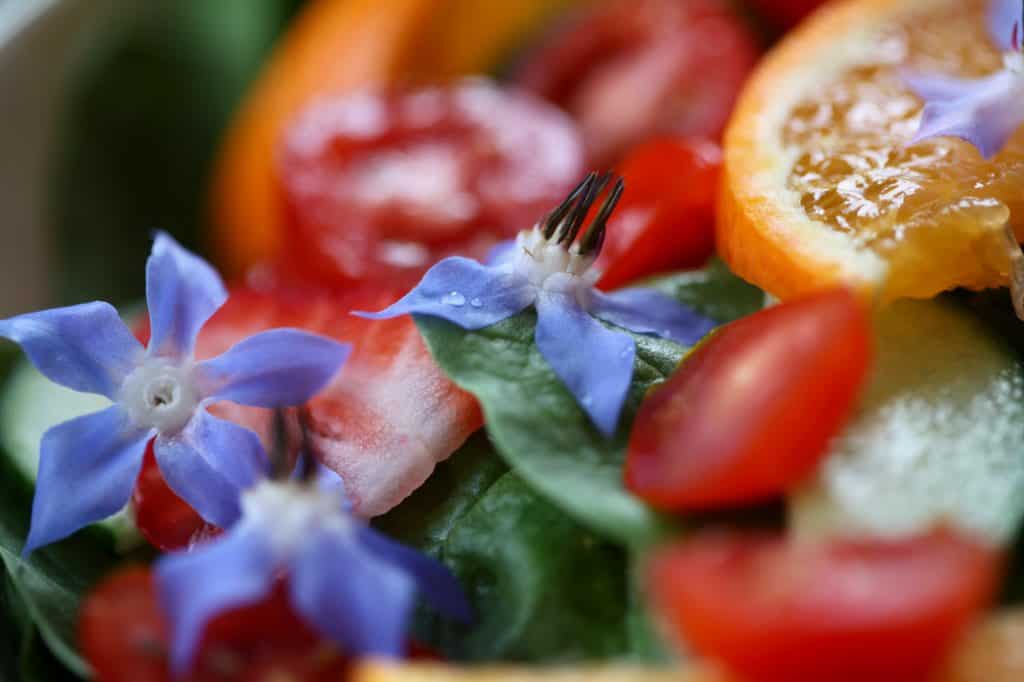
The flowers also have that delicate cucumber flavor, which is always a bonus.
Just pull the blossoms off the plant, and leave the bristles of the calyx. The mature blossoms come off easily without much resistance.
The pink blooms require a little more effort to pull from the stem.
Add the flowers to summer drinks, iced tea, or lemonade. Add them to ice cubes, or just sprinkle a few into your drinks.
Decorate cakes, cupcakes and cookies with the sweet fresh blossoms.
The leaves can be used in both fresh and dried forms.
Cut the fresh leaves to use in salads, and also in spreads. Dehydrate the leaves to preserve them to add to sauces and to your cooking for their nutritional value.
The bristles on the leaves are not as noticeable after dehydrating or chopping for use in dishes. The young leaves are more tender than the larger more mature leaves.
The borage leaves can also be used in the fresh or dried forms to make a delicious herbal tea.
Even the stems of the plant can be used. The stems can be peeled and used like celery in your dishes.
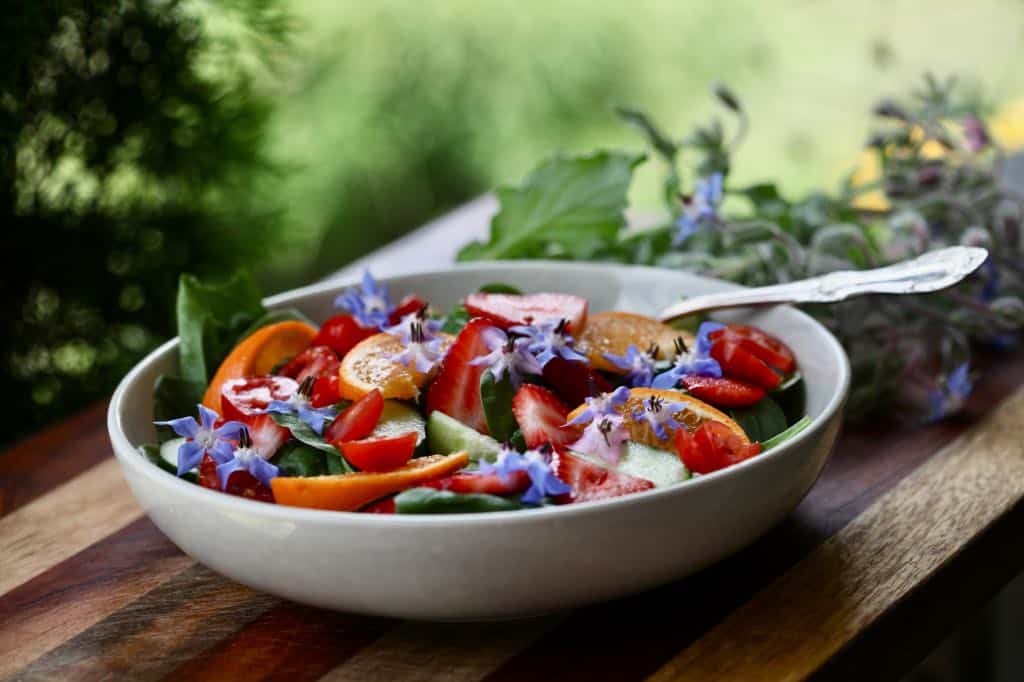
Use In The Garden
In the garden, borage is used to attract pollinators. The plant is a bee magnet, and also brings in many other beneficial insects.
The bees love borage. It is a great source of nectar for honey bees, and has been grown by bee keepers to increase honey production.
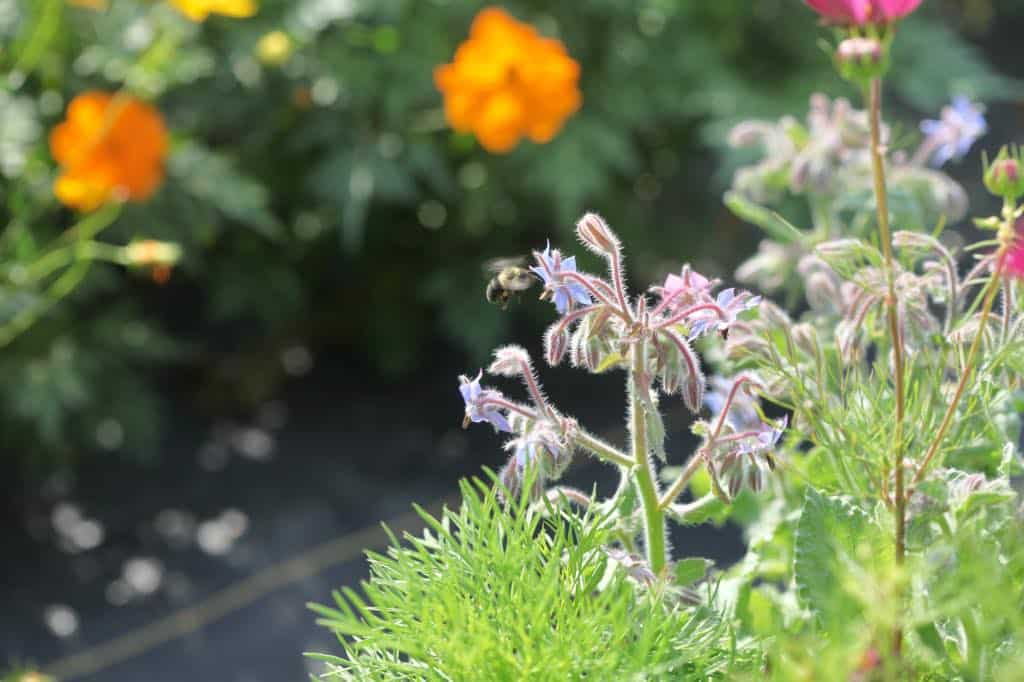
Historically the plant has been grown in apiaries. Bees will take the nectar from the plants and turn it into honey.
It is also used as a companion plant to attract pests away from certain vegetables in the garden. Borage repels pests, such as the tomato hornworm and cabbage worms, and is a great companion plant for tomatoes and other vegetables.
Borage also serves a function as a green mulch and fertilizer for the soil. The green leaves will compost in place at the end of the season, adding nutrients back into the soil.
Any volunteer plants that are removed can be placed onto the garden soil to decompose in place, and add value back into the soil.
Just like comfrey fertilizer, the leaves of borage can also be used to make a fertilizer tea to use in the garden. Any plants which accumulate nutrients make great fertilizers.
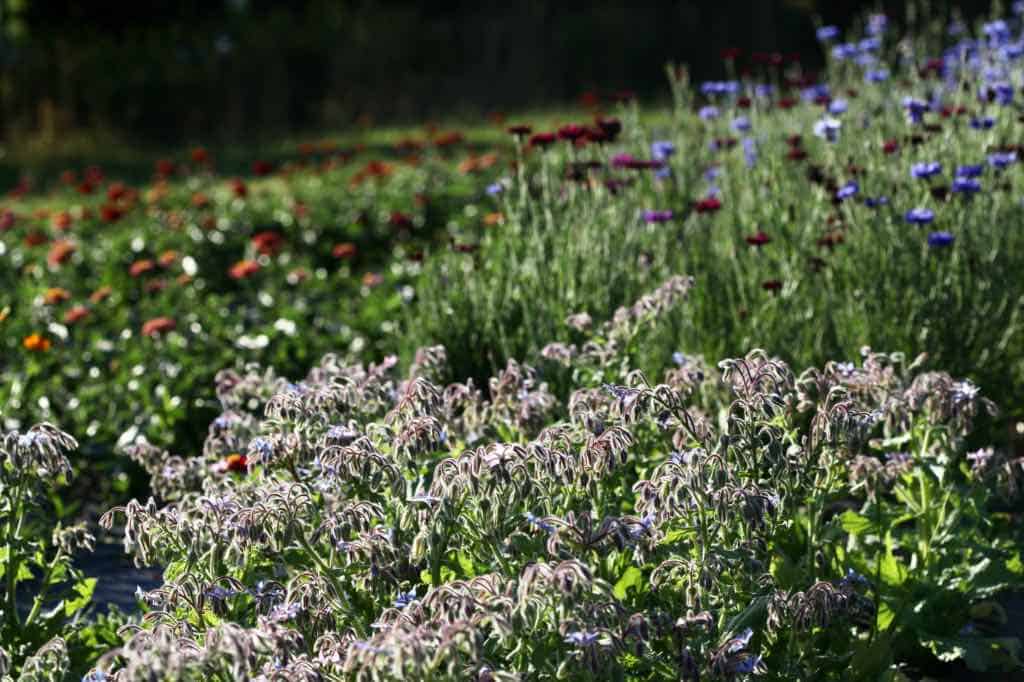
Medicinal Uses
Borage is also used for it's seed oil, and has numerous documented herbal benefits.(source)
Used historically throughout the ages, borage continues to be an important herb for the herb garden.
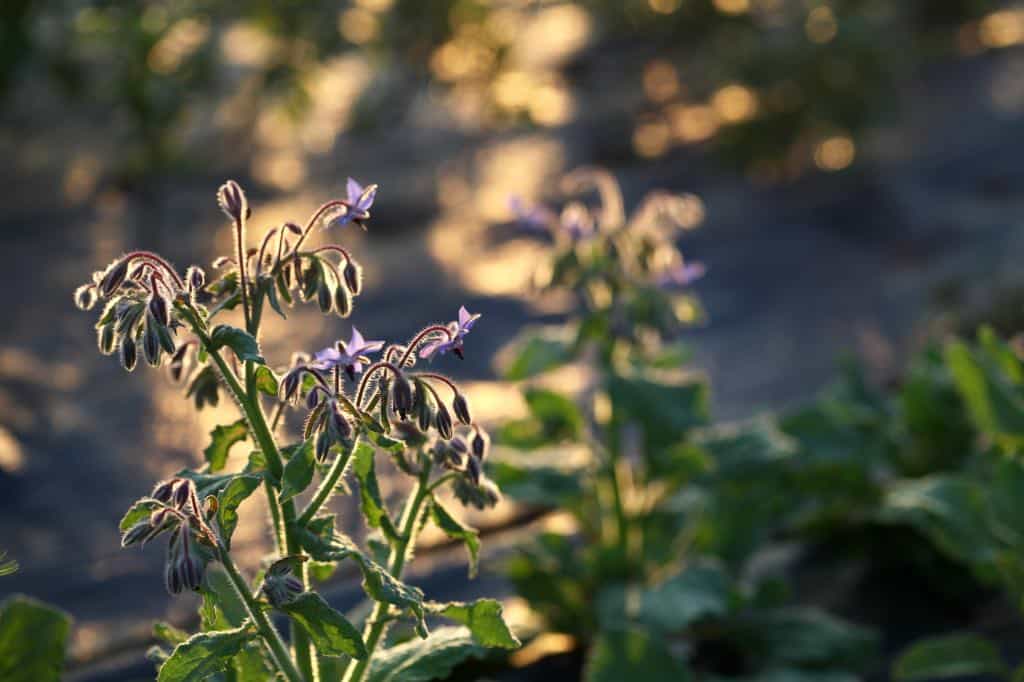
Conclusion
Borage is a low maintenance plant that is easy to grow from seed. It is a fast growing plant, and has many benefits to offer to both the gardener and the garden.
The plant can be used for many culinary dishes, and is certainly one that can be included as an outstanding garnish. The leaves and the flowers of borage taste like cucumber, which is pleasing to the palate.

It is an excellent companion plant for many vegetables in the vegetable garden. Borage can also be grown in other types of garden beds, such as the herb or flower gardens as well.
It is a great companion plant because of the pollinators that it attracts to the garden, as well as for the pests it repels. Pollinators absolutely love borage, and this was an important consideration for growing this herb.
Borage attracts loads of pollinators, including bees and butterflies, and will return to the garden season after season through volunteer plants.
It's fun to watch the bees travelling from flower to flower, getting their fill of the nectar.
I have not yet used borage as cut flowers, however can see the value of the stems and glistening flower buds as a filler in bouquets. The flowers can also be dried and used in dried flower arrangements.
Borage is an amazing plant, and will always have a place in our garden.
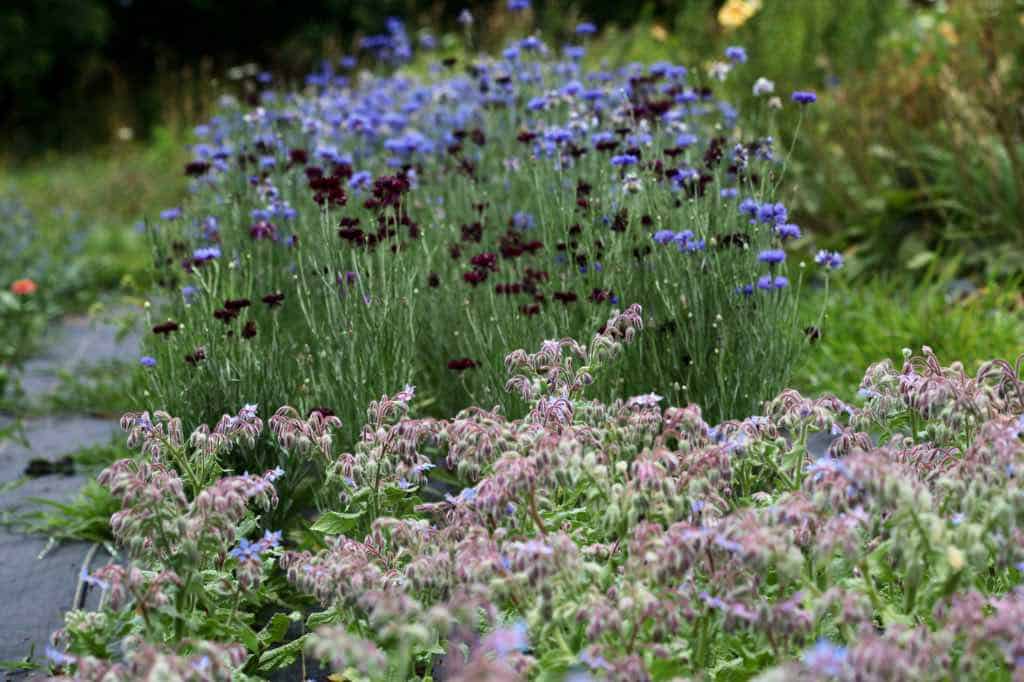
Have you ever tried to grow borage from seed? Be sure to share your experience by leaving a comment below!
Other Posts You May Like:
PIN IT FOR LATER!
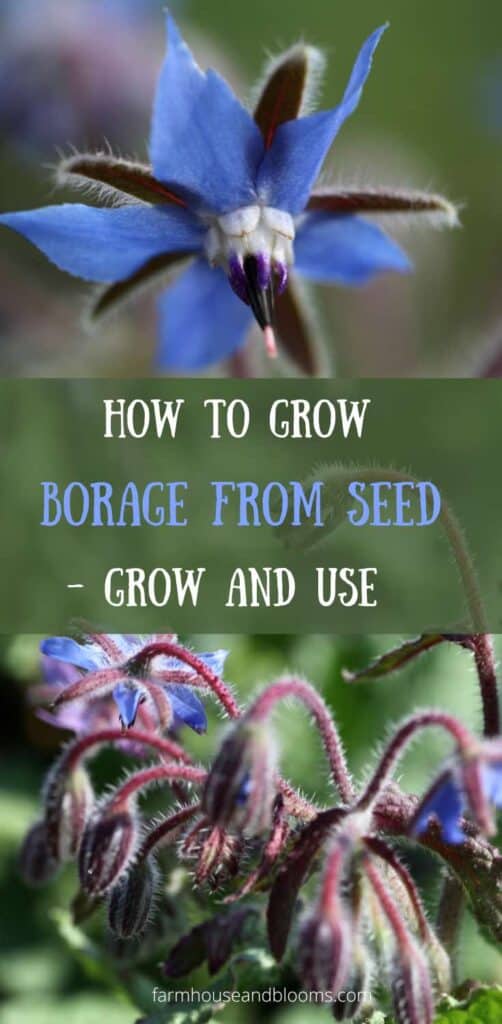
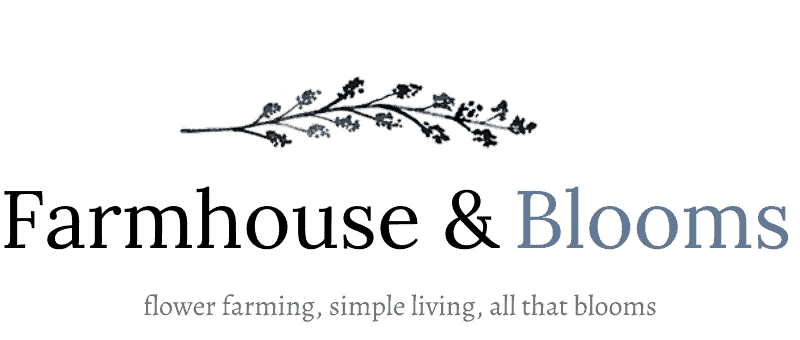

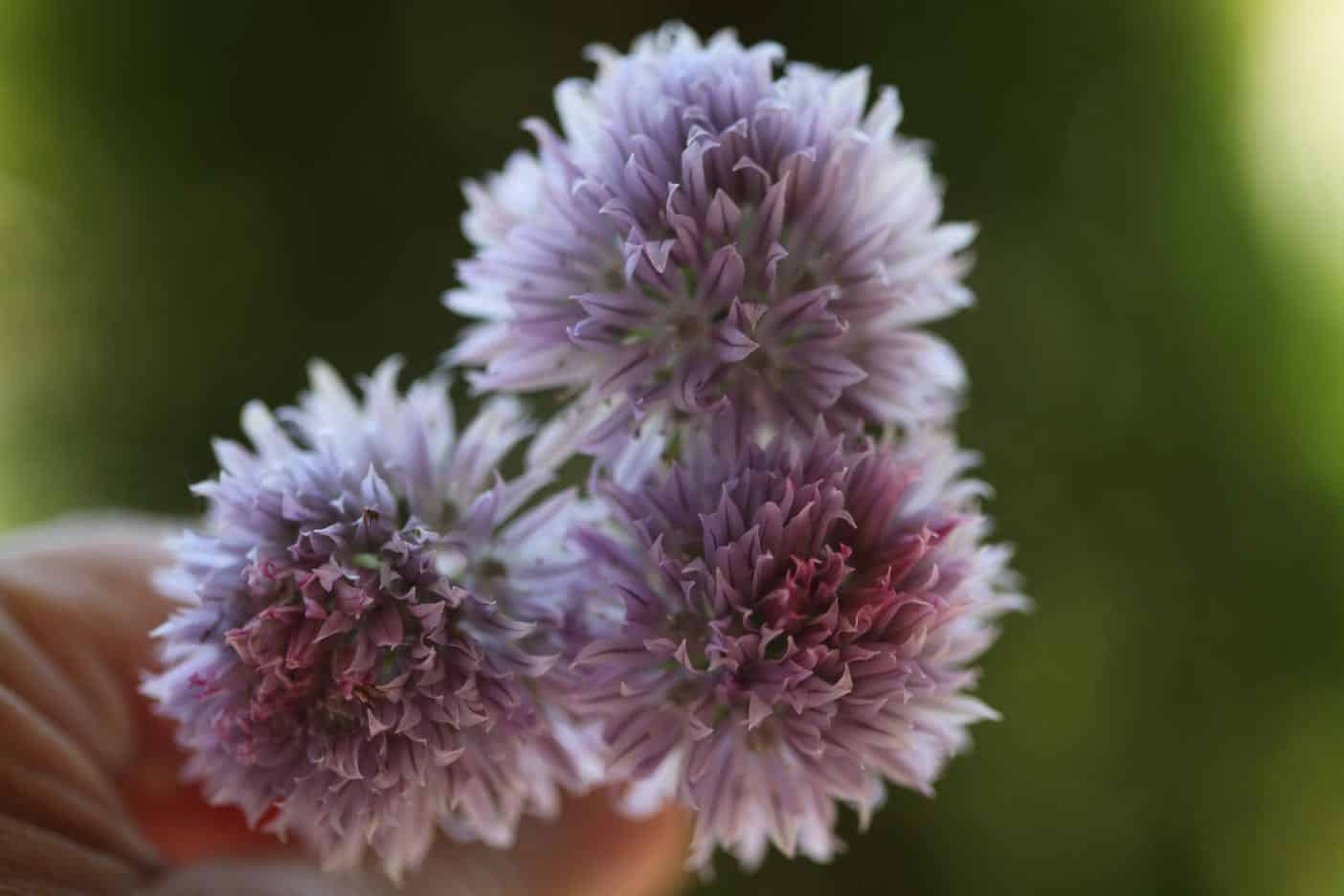
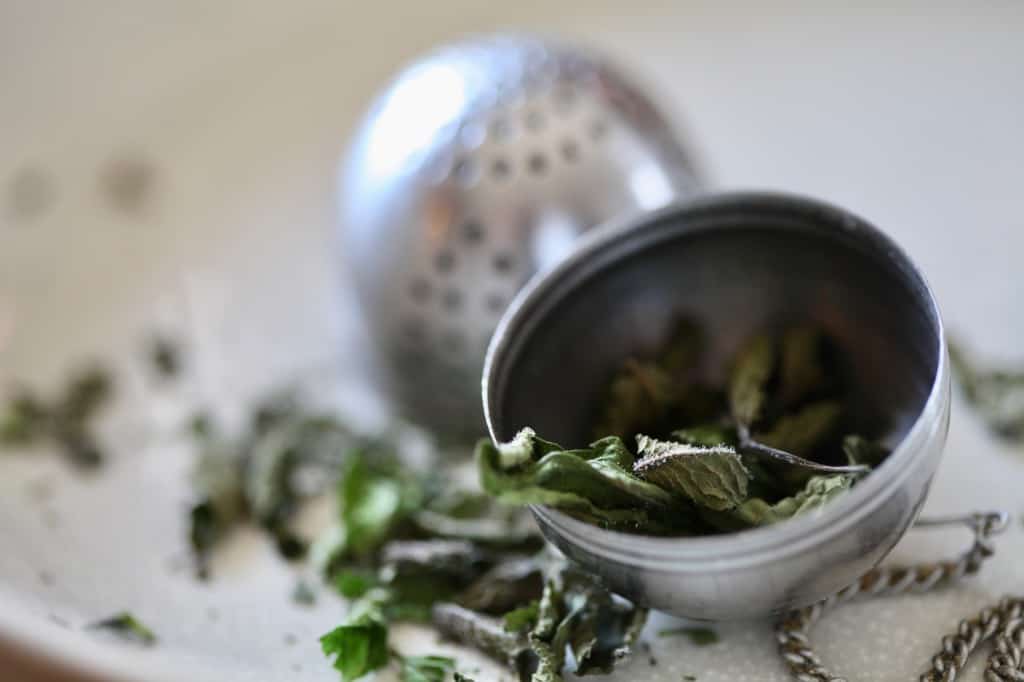
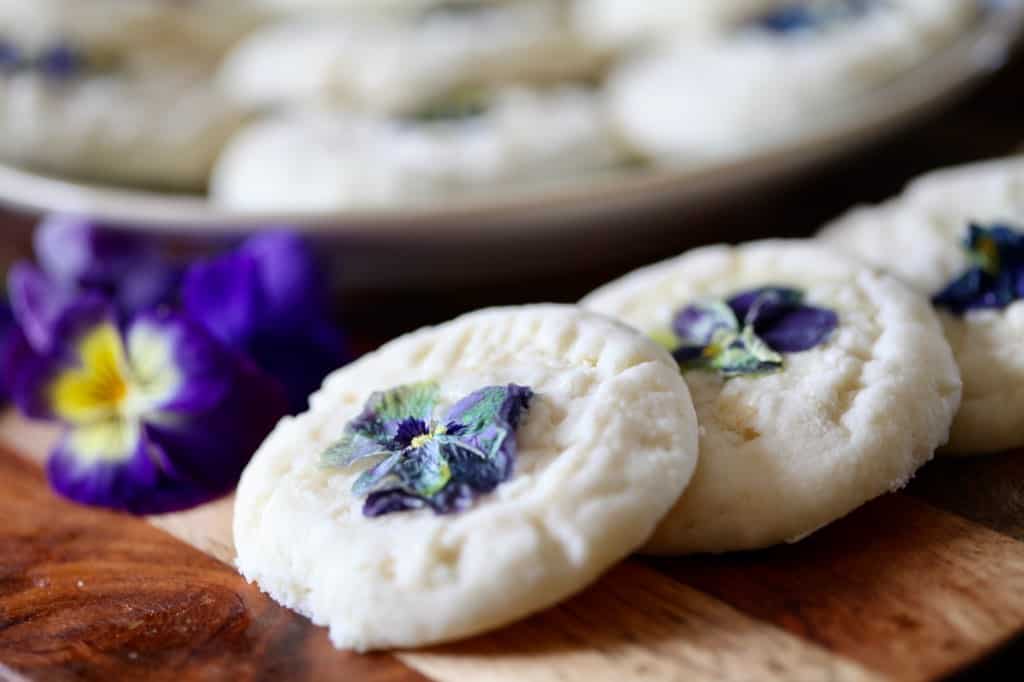

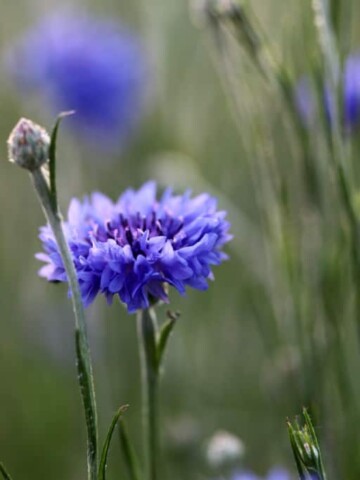
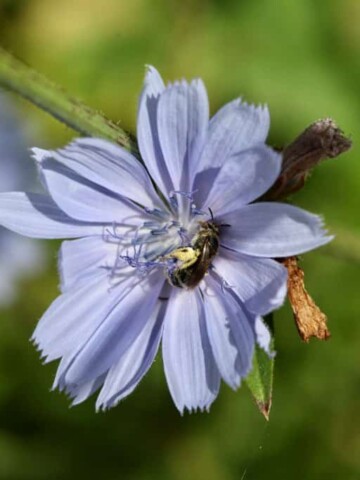
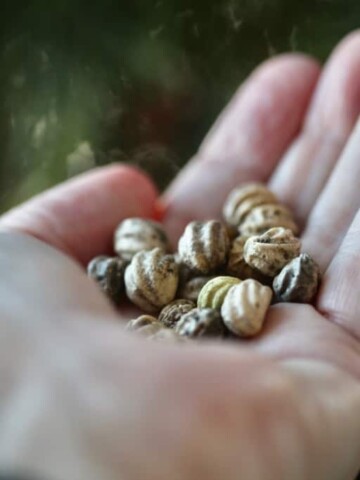
Leave a Reply